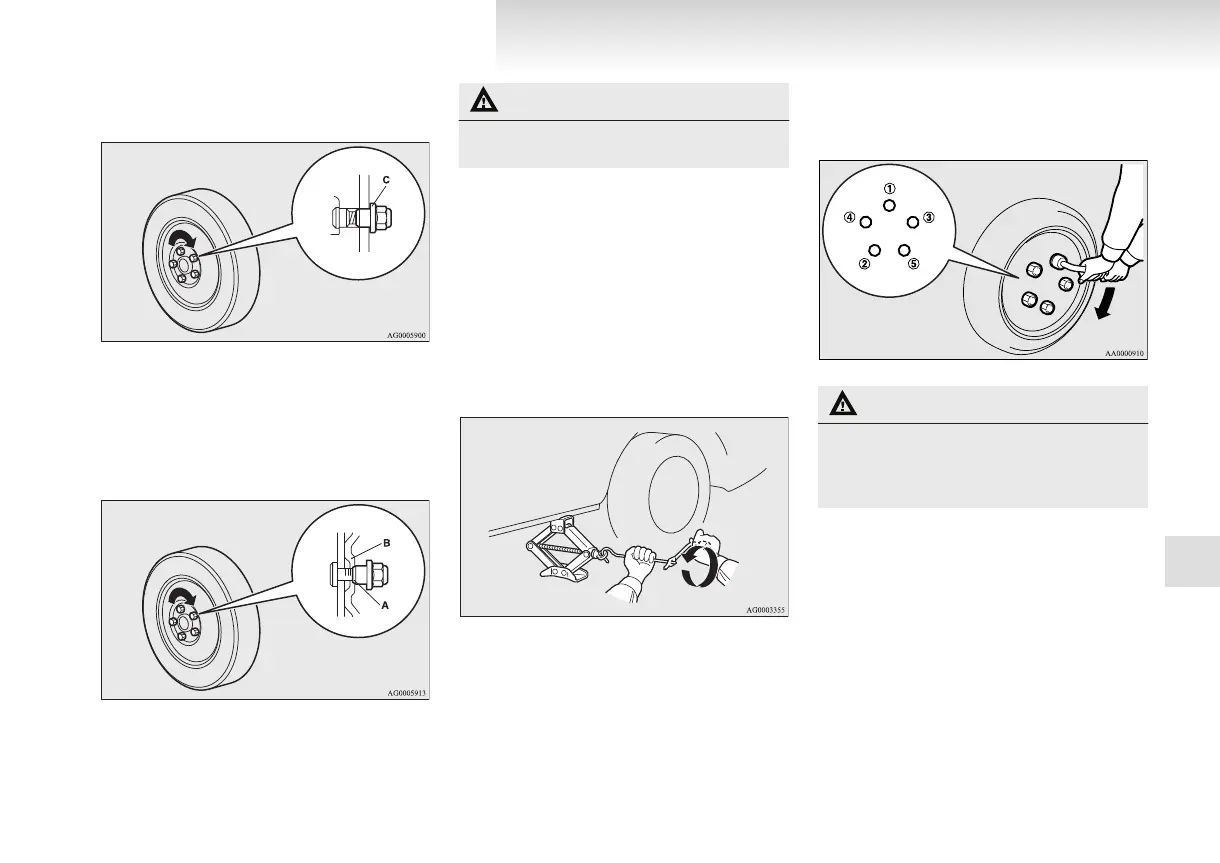wheel enough to keep the tyre from wob-
bling.
l
Steel spare wheel and temporary spare
wheel
Initially tighten the wheel nuts until the ta-
pered area (A) of the nuts lightly touches
the wheel hole seat area (B) enough to
keep the tyre from wobbling.
CAUTION
l
Never apply oil to either the wheel bolts
or the nuts, or they will tighten too much.
NOTE
l
Flange nuts can be temporarily used on the
steel wheel, but return to the original wheel
and tyre as soon as possible.
l
If all 4 aluminium wheels are changed to
steel wheels, e.g. when fitting winter tyres,
use tapered nuts.
8. Lower the vehicle slowly by rotating the
wheel nut wrench anticlockwise until the
tyre touches the ground.
9. Tighten the nuts in the order shown in the il-
lustration until each nut has been tightened
to the torque listed here.
Tightening torque 88 to 108 Nm
(Achieved by applying force of 350 to 420 N
at end of wheel nut wrench supplied with ve-
hicle)
CAUTION
l
Never use your foot or a pipe extension
for extra force in the wheel nut wrench.
If you do so, you will tighten the nut too
much.
10. If the vehicle has a wheel cover, install it.
Refer to “Wheel covers” on page 6-18.
11. Lower and remove the jack, then store the
jack, flat tyre, and chocks. Have your dam-
aged tyre repaired as soon as possible.
12. Check your tyre inflation pressure at the next
gasstation. The correct tyre pressures are
shown on the driver’s door label. See the il-
lustration.
For emergencies
6-15
6

